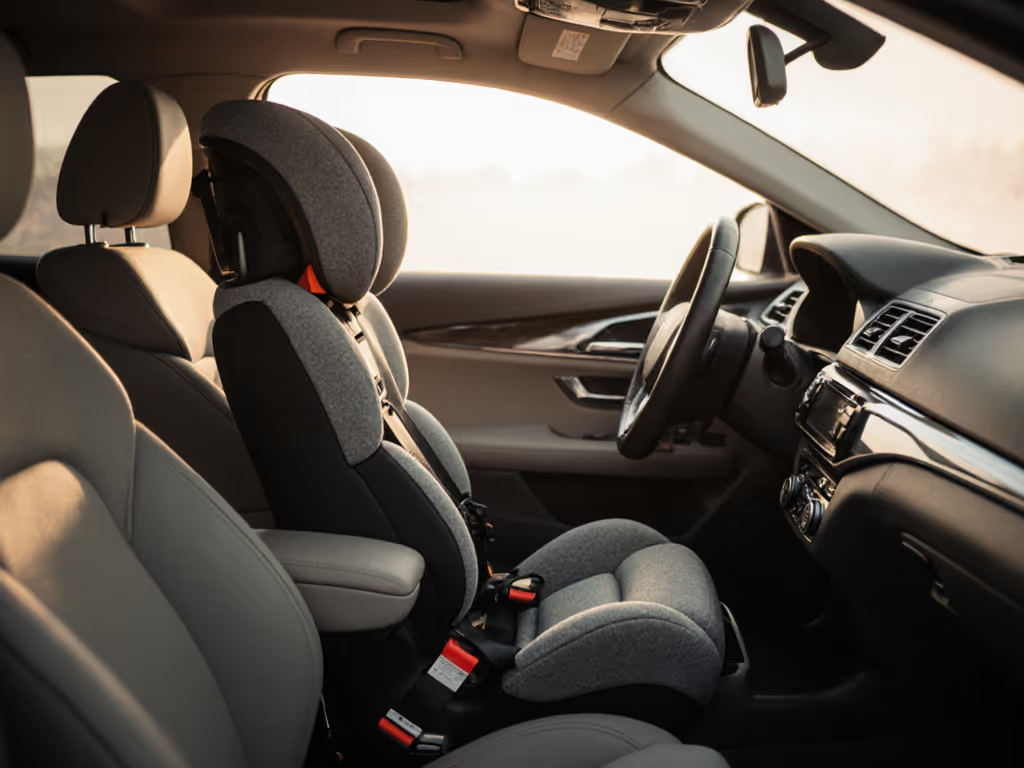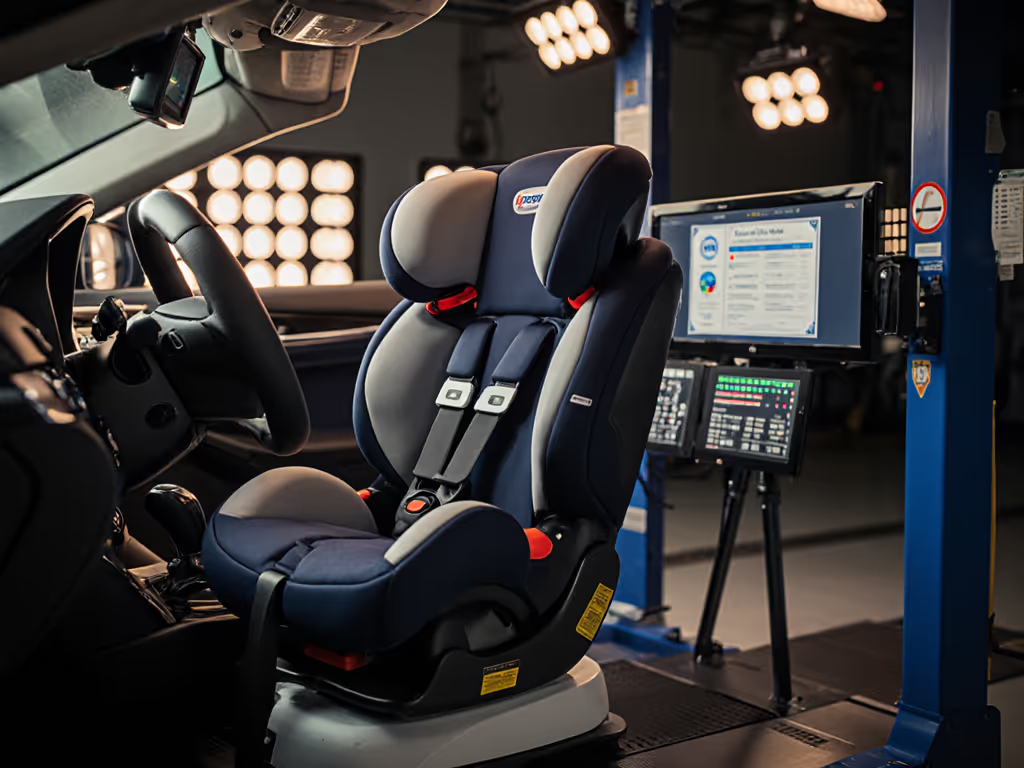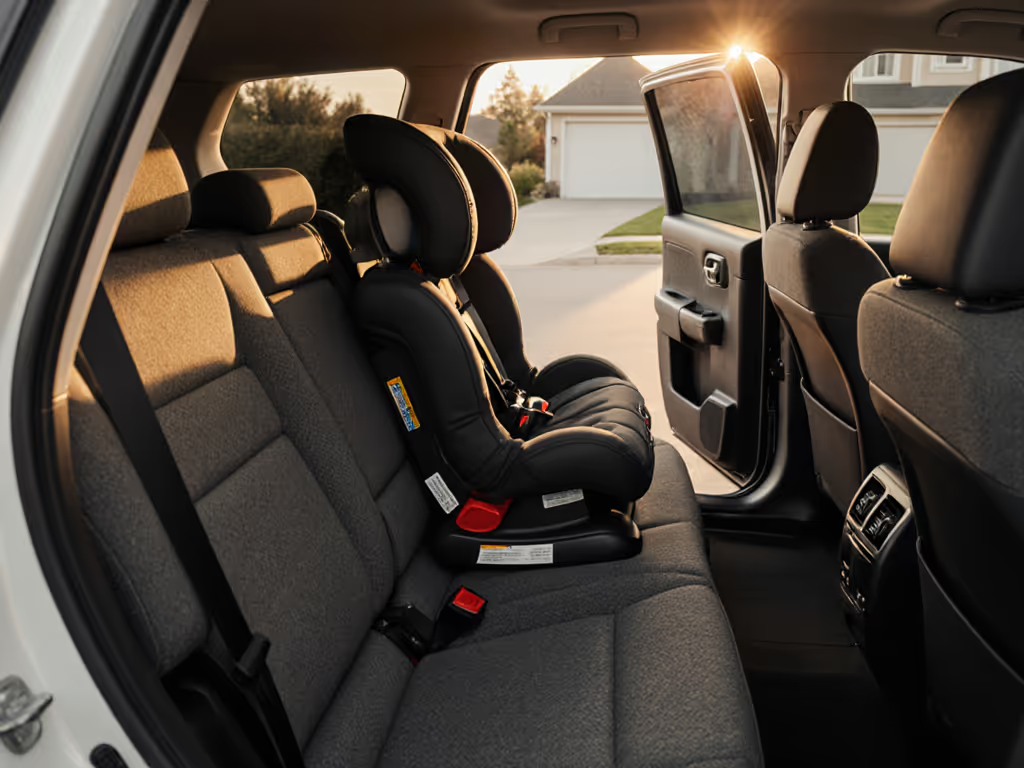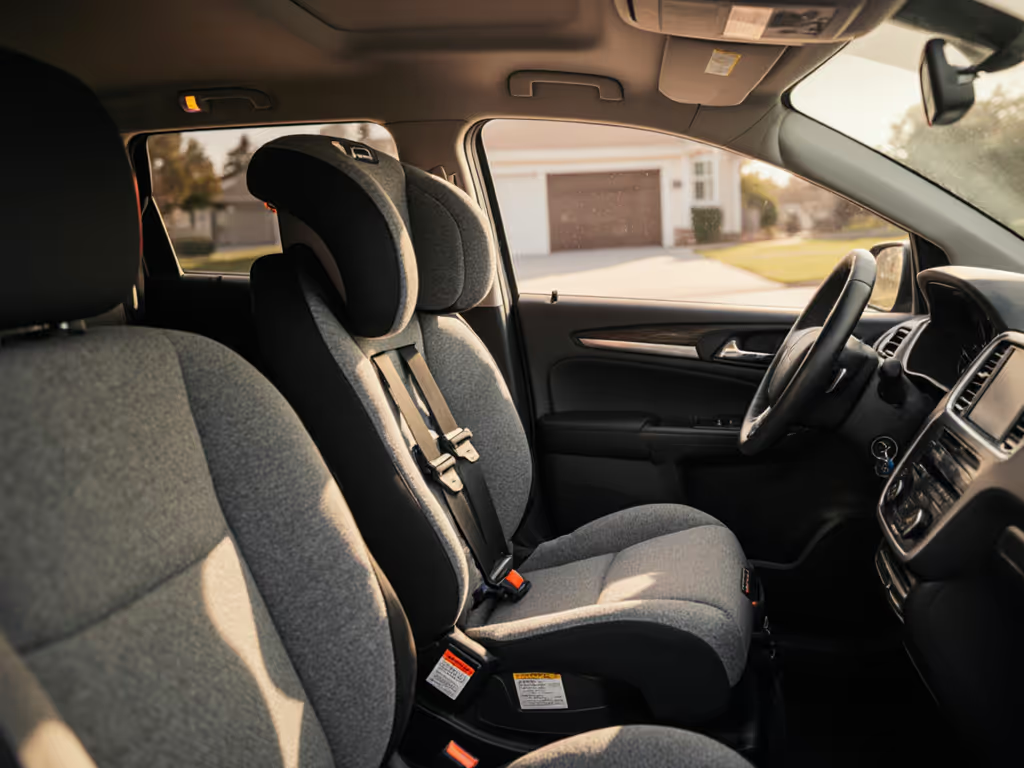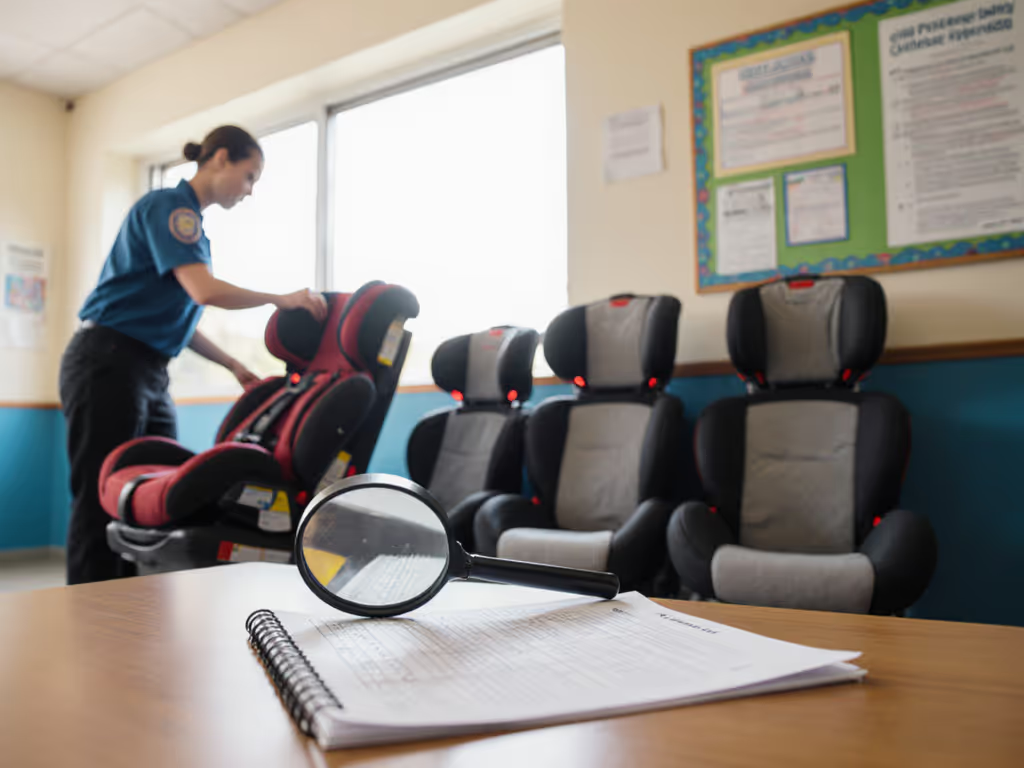
7 Age-Appropriate Car Seat Types Every Parent Should Know
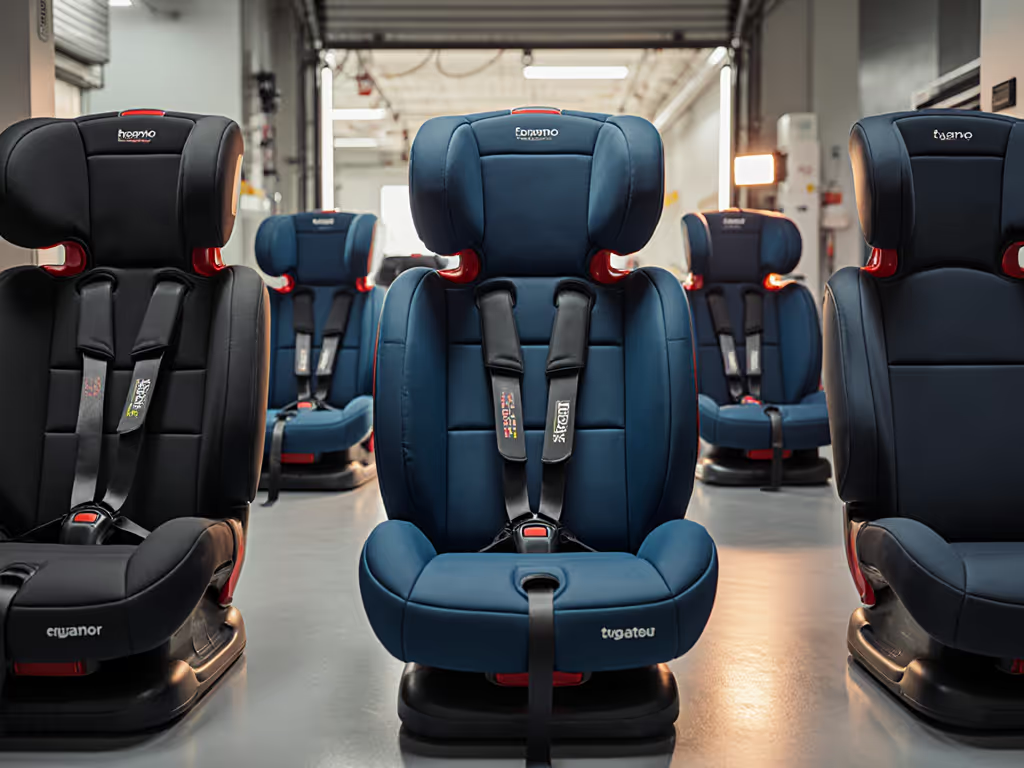
Car crashes are a leading cause of injury for children, with proper car seat use reducing risk by as much as 71 percent for infants. From the first ride home to the final transition to seat belts, every stage of car seat safety shapes your child’s well-being on the road. Knowing which seat to use and when can make all the difference, helping families protect their kids confidently at every milestone.
Quick Summary
| Takeaway | Explanation |
|---|---|
| 1. Keep infants rear-facing until age 2 | Rear-facing seats provide essential protection for infants during car travel, reducing injury risk significantly in collisions. |
| 2. Choose convertible car seats for longevity | Convertible seats can be used from birth to early childhood, extending the rear-facing period and offering excellent long-term safety value. |
| 3. Transition to forward-facing with care | Wait until your child meets height or weight limits and ensures proper seating posture before switching to a forward-facing car seat. |
| 4. Select appropriate booster type | High-back boosters offer better support for children who need additional safety features, while backless models are portable and convenient for older kids. |
| 5. Assess seat belt readiness correctly | Use the five-step test to ensure your child is ready for a vehicle seat belt, enhancing their safety during rides. |
1. Rear-Facing Infant Car Seats: Birth to 2 Years
When it comes to protecting your newborn during car travel, rear-facing infant car seats are your first line of defense. These specialized safety systems are designed specifically for babies from birth to approximately 2 years old, providing critical protection during the most vulnerable developmental stages.
Rear-facing car seats are engineered to cradle and support an infant's fragile head, neck, and spine in the event of a sudden stop or collision. Unlike forward-facing seats, these seats distribute crash forces across the entire back of the car seat, dramatically reducing the risk of serious injury. The American Academy of Pediatrics strongly recommends keeping children rear-facing as long as possible, typically until they reach the maximum height or weight limit for their specific seat model.
Key safety features of rear-facing infant car seats include:
- Adjustable 5-point harness systems
- Removable infant inserts for newborns
- Angle indicators to ensure proper installation
- Side impact protection panels
Parents should pay close attention to two critical measurements when selecting a rear-facing seat: the child's weight and height. Most infant seats accommodate babies from 4 to 35 pounds, with height restrictions typically ranging between 30-32 inches. Always consult your specific car seat's manufacturer guidelines for precise limits.
Proper installation is just as important as selecting the right seat. Most rear-facing infant seats can be installed using either the vehicle's seat belt or LATCH (Lower Anchors and Tethers for Children) system. Consider having your installation professionally checked at a local child passenger safety inspection station to ensure maximum protection.
Pro tip: Rotate and adjust the car seat's recline angle as your baby grows to maintain optimal safety and comfort. Newborns require a more reclined position, while older infants can sit at a slightly more upright angle.
2. Convertible Car Seats: Extended Rear-Facing Benefits
Convertible car seats represent a smart and economical approach to child passenger safety that grows right alongside your child. These versatile seats offer parents a single solution that can transition from rear-facing to forward-facing configurations, providing exceptional protection during multiple developmental stages.
Unlike traditional infant seats with limited usage windows, convertible car seats are designed to accommodate children from birth through early childhood. Typically supporting weight ranges from 5 to 50 pounds in rear-facing mode and up to 65 pounds when forward-facing, these seats provide exceptional long-term value and safety protection.
Extended rear-facing benefits include:
- Significantly reduced risk of spinal and head injuries
- Enhanced protection during critical developmental years
- More stable and secure positioning for younger children
- Reduced stress on neck and head during sudden stops
The American Academy of Pediatrics recommends keeping children rear-facing as long as possible. Convertible seats make this recommendation easier to follow by offering wider weight and height ranges compared to infant-only seats. Many modern convertible seats now support rear-facing use until children reach 40-50 pounds, dramatically extending the protective rear-facing period.
When selecting a convertible car seat, parents should carefully consider several key factors. Measurements matter: Check your vehicle's interior dimensions to ensure proper fit. Some larger convertible seats might be challenging to install in smaller cars. Look for seats with multiple recline positions and clear installation indicators to guarantee optimal positioning.
Pro tip: Many convertible car seats now feature advanced side impact protection, energy absorbing foam, and reinforced shell designs that provide superior crash protection compared to older models. Take time to understand your specific seat's unique safety features and installation requirements to maximize child protection.
3. Forward-Facing Car Seats: When and How to Transition
Transitioning your child to a forward-facing car seat is a significant milestone in their safety journey. Forward-facing car seats provide critical protection for children who have outgrown their rear-facing configurations, typically between ages 2 and 4 years old.
The decision to switch to a forward-facing seat should not be based solely on age but on your child's specific physical development. Key transition criteria include reaching the maximum weight or height limit for rear-facing seats and meeting the minimum requirements for forward-facing protection. Most pediatric safety experts recommend delaying this transition as long as possible to maximize protection during early childhood.
Critical transition guidelines:
- Wait until child reaches minimum 2 years old
- Ensure child meets seat's weight and height specifications
- Check that child has not exceeded rear-facing seat limits
- Confirm child can sit independently and maintain proper posture
Forward-facing car seats are engineered with sophisticated safety features designed to protect children during potential collisions. These seats typically include robust harness systems that distribute crash forces across the strongest parts of a child's developing body. Five point harness designs provide superior protection by securing children at the shoulders, hips, and between the legs.
Parents should pay careful attention to harness fit and positioning. The harness straps should sit at or slightly above shoulder level when facing forward. Always perform the pinch test to ensure straps are snug: if you can pinch excess fabric at the shoulder, the harness needs tightening.
Pro tip: Many modern forward-facing car seats include adjustable headrests and multiple recline positions. These features allow you to customize the seat as your child grows, ensuring continued optimal protection and comfort throughout their early childhood years.
4. Combination Seats: Harness to Booster Features
Combination car seats represent the ultimate flexibility in child passenger safety, offering parents a smart solution that adapts to their child's changing needs. These innovative seats transition seamlessly from a forward-facing harness seat to a belt-positioning booster, providing long-term protection and exceptional value.
Designed to support children through multiple developmental stages, combination seats typically accommodate children from 20 to 65 pounds in harness mode and up to 100 to 120 pounds in booster configuration. This extended usage range means parents can invest in a single seat that protects their child for several years, eliminating the need for multiple seat purchases.
Key features of combination seats include:
- Removable 5-point harness system
- Adjustable headrest and shoulder belt positions
- Multiple recline settings
- Integrated weight and height indicators
- Robust side impact protection
The transition from harness to booster mode requires careful attention. When your child reaches the maximum weight or height for the harness configuration, you can remove the internal harness and use the vehicle's seat belt with the seat's built-in guides. This gradual transition helps children learn proper seat belt positioning while maintaining critical safety protections.
Parents should watch for specific readiness indicators before switching to booster mode. Crucial transition signals include the child exceeding the harness height limit, demonstrating ability to sit still, and meeting minimum age recommendations typically around 4 to 5 years old.
Pro tip: Always verify your vehicle's specific seat belt compatibility and the combination seat's exact specifications. Some vehicles and seating positions work better with certain booster designs, so take time to understand your specific safety requirements.
5. Booster Seats: High-Back vs. Backless Explained
Booster seats play a critical role in child passenger safety for children who have outgrown traditional car seats but are not yet large enough to use vehicle seat belts alone. These seats help position children properly so that seat belts fit correctly across their body, reducing the risk of serious injury during potential accidents.
Two primary booster seat designs exist: high-back and backless models. Each offers unique benefits and is suited to different scenarios, vehicle types, and child development stages. High-back boosters provide additional head and neck support, making them ideal for vehicles without built-in headrests or for younger children who need more comprehensive positioning assistance.
Key differences between booster types:
- High-back boosters offer superior head and neck protection
- Backless boosters are more lightweight and portable
- High-back models work better in vehicles with low seat backs
- Backless boosters are often more affordable
When selecting between high-back and backless boosters, consider your child's age, size, and the specific characteristics of your vehicle. High-back boosters are typically recommended for children between 4 and 8 years old who are not yet tall enough to fit properly in standard seat belts. They provide critical side impact protection and help guide seat belts into the correct position across a child's chest and hips.
Backless boosters work well for older children who have outgrown high-back models and have adequate head support from the vehicle's seat or headrest. These lighter models are excellent for travel, carpooling, and situations requiring maximum portability.
Pro tip: Regardless of booster type, always ensure the seat belt fits correctly. The lap belt should rest low across the upper thighs not the stomach, and the shoulder belt should cross the center of the chest and shoulder. Never place the shoulder belt behind the child or under their arm.
6. Special Needs Car Seats: What Parents Should Know
Special needs car seats represent a critical safety solution for children with physical, developmental, or medical conditions that require customized transportation protection. These specialized seats go beyond standard car seat designs, offering tailored support and safety features for children with unique physical requirements.
Understanding the specific needs of children with medical conditions or disabilities is crucial when selecting an appropriate car seat. Adaptive car seat features can include enhanced postural support, additional harness configurations, wider weight ranges, and specialized padding to accommodate medical equipment or specific physical challenges.
Key considerations for special needs car seats:
- Customizable positioning options
- Compatibility with medical devices
- Enhanced safety restraint systems
- Adjustable support for different medical conditions
- Increased weight and size accommodations
Parents of children with special needs should work closely with pediatric medical professionals, physical therapists, and certified child passenger safety technicians. These experts can provide personalized guidance on selecting a car seat that addresses specific medical requirements while ensuring maximum safety during transportation.
Some specialized car seats are designed for children with conditions such as cerebral palsy, muscular dystrophy, spinal cord injuries, and other developmental challenges. These seats often feature modular designs that can be customized with additional supports, positioning accessories, and adaptive equipment to meet individual child needs.
Pro tip: Many manufacturers now offer consultative services for families seeking special needs car seats. Request comprehensive measurements and professional fitting recommendations to ensure the absolute best match for your child's unique physical requirements. Do not hesitate to invest time in finding the perfect adaptive solution that provides both safety and comfort.
7. Transitioning to Vehicle Seat Belts Safely
Transitioning from car seats to vehicle seat belts marks a significant milestone in a child's safety journey. This critical process requires careful consideration of the child's physical development, maturity, and ability to maintain proper seated positioning throughout a vehicle trip.
Most pediatric safety experts recommend waiting until a child is between 8 and 12 years old before allowing them to use a standard seat belt without additional support. The five-step seat belt readiness test helps parents determine whether their child is prepared for this important transition.
Key readiness indicators include:
- Child can sit with back against vehicle seat
- Knees bend comfortably at seat edge
- Lap belt sits across upper thighs
- Shoulder belt crosses center of chest
- Child can maintain proper position throughout trip
Physical size plays a crucial role in seat belt safety. Children typically need to reach approximately 4 feet 9 inches tall and weigh between 80 and 100 pounds to fit properly in standard vehicle seat belts. Premature transitions can significantly increase injury risks during potential accidents.
Parents should perform the seat belt fit test every time a child rides in a vehicle. Improper positioning can lead to serious injuries during sudden stops or collisions. The seat belt should rest low on the hips touching the upper thighs, not across the stomach. The shoulder belt must cross the center of the chest and shoulder, never behind the back or under the arm.
Pro tip: Consider using a belt-positioning booster even after your child passes the initial readiness test. These additional supports can provide extra safety and comfort during the transition period, ensuring your child remains protected as they grow.
Below is a comprehensive table summarizing the main points and key considerations for different types of car seats and their usage stages discussed throughout the article.
| Car Seat Type | Key Features | Usage Guidelines |
|---|---|---|
| Rear-Facing Infant Car Seats | Adjustable 5-point harness; Removable infant inserts; Angle indicators; Side impact protection panels. | Use from birth to ~2 years. Ensure weight limits (4-35 lbs) and height limits (30-32 inches) are adhered to. Proper installation is crucial for safety. |
| Convertible Car Seats | Supports extended rear-facing; Multiple recline positions; Energy-absorbing foam; Reinforced shell designs. | Transition from rear to forward-facing as child grows. Accommodates weights from 5-50 lbs rear-facing, and up to 65 lbs forward-facing. Consider car's interior dimensions. |
| Forward-Facing Car Seats | Robust harness systems; Adjustable headrests; Multiple recline settings. | Transition when child exceeds rear-facing seat limits, typically between ages 2-4. Ensure harness fits properly and perform the pinch test for snugness. |
| Combination Seats | Removable 5-point harness; Integrated weight and height indicators; Side impact protection. | Transition from harness to booster when outgrowing harness mode (20-65 lbs) up to 100-120 lbs in booster. Confirm seat belt positioning is correct. |
| Booster Seats | High-back: Superior head/neck protection; Backless: Lightweight, portable. | Suitable for children 4-8 years. Ensure correct seat belt fit: lap belt on thighs, shoulder belt on chest/shoulder. High-back preferred for added support. |
| Special Needs Car Seats | Enhanced postural support; Compatibility with medical devices; Adjustable harness systems. | Seek guidance from medical professionals for tailored needs. Ensure compatibility with medical devices and consider personalized fitting services. |
| Vehicle Seat Belts | Five-step readiness test; Seat belt fit test. | Use when child is ~8-12 years, 4'9" tall, 80-100 lbs. Ensure proper seat belt positioning: lap belt across thighs, shoulder belt across chest. Consider a booster for enhanced safety. |
Take the Guesswork Out of Choosing the Right Car Seat for Every Age
Worried about whether your child has outgrown their car seat or struggling to understand the safest time to transition from rear-facing to booster? The article you just read lays out the essential stages, but many parents find themselves overwhelmed by all the options, safety rules, and product differences. Common pain points like confusion about height and weight limits, fear of improper installation, or concern over comfort and safety can make every car ride stressful instead of secure.
If you want peace of mind as your child grows, you need trusted information backed by science and real-world testing. At Fits for Years Seats, we deliver expert guidance on every type of car seat, from extended rear-facing solutions to the best age-appropriate boosters. Explore our comprehensive safety tips and buying guides to make sure your next seat is the safest and most comfortable fit. Discover step-by-step installation advice, detailed reviews, and personalized recommendations tailored to your child’s needs. Visit Fits for Years Seats today and feel confident you are giving your child the best protection at every stage.
Frequently Asked Questions
What is the age range for using rear-facing infant car seats?
Rear-facing infant car seats are designed for babies from birth up to approximately 2 years old. Choose a seat that accommodates your child's weight and height limits, typically between 4 to 35 pounds and 30-32 inches tall.
When should I transition my child to a forward-facing car seat?
You should transition your child to a forward-facing car seat when they outgrow the rear-facing seat, typically around 2 to 4 years old. Ensure your child meets the car seat's weight and height specifications before making the switch.
How do I know if my child is ready for a booster seat?
Your child is ready for a booster seat once they exceed the height or weight limit of their forward-facing seat, usually around 4 to 5 years old. Confirm that your child can sit still and maintain proper posture throughout the ride before transitioning.
What are the differences between high-back and backless booster seats?
High-back booster seats provide additional head and neck support, making them ideal for younger children or vehicles with low seat backs. Backless booster seats are more portable and often more affordable, suitable for older children who can rely on the vehicle's headrest for support.
How can I ensure my child's seat belt fits properly during the transition?
To ensure proper seat belt fit, perform the five-step seat belt readiness test, checking that your child can sit with their back against the seat, knees bending at the seat's edge, and the lap belt sitting low across the thighs. Make adjustments or use a belt-positioning booster if needed for safety.
What features should I look for in a special needs car seat?
When selecting a special needs car seat, look for customizable positioning options, enhanced safety restraint systems, and compatibility with any necessary medical devices. Work closely with medical professionals to choose a seat that meets your child's unique physical requirements.

